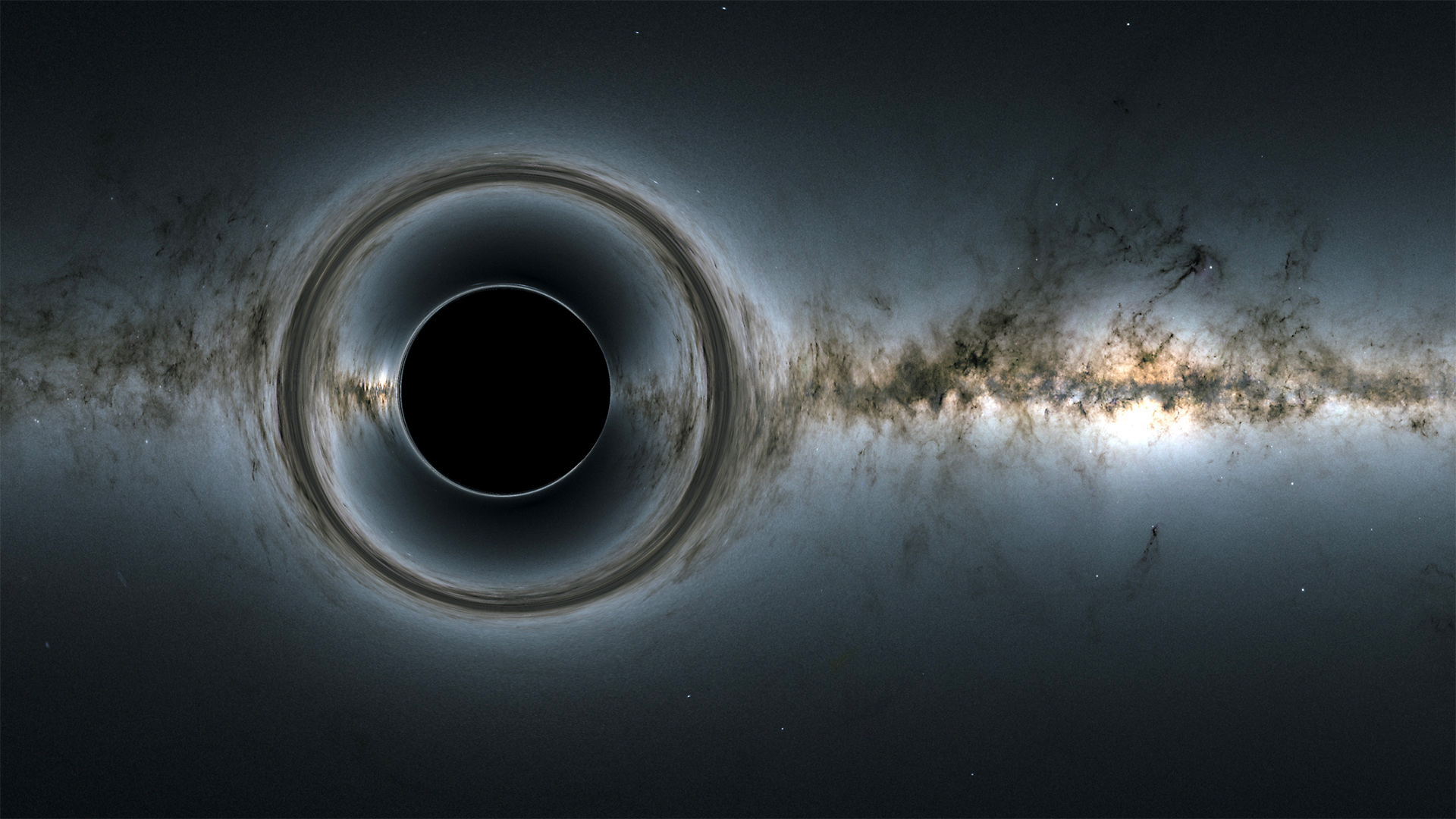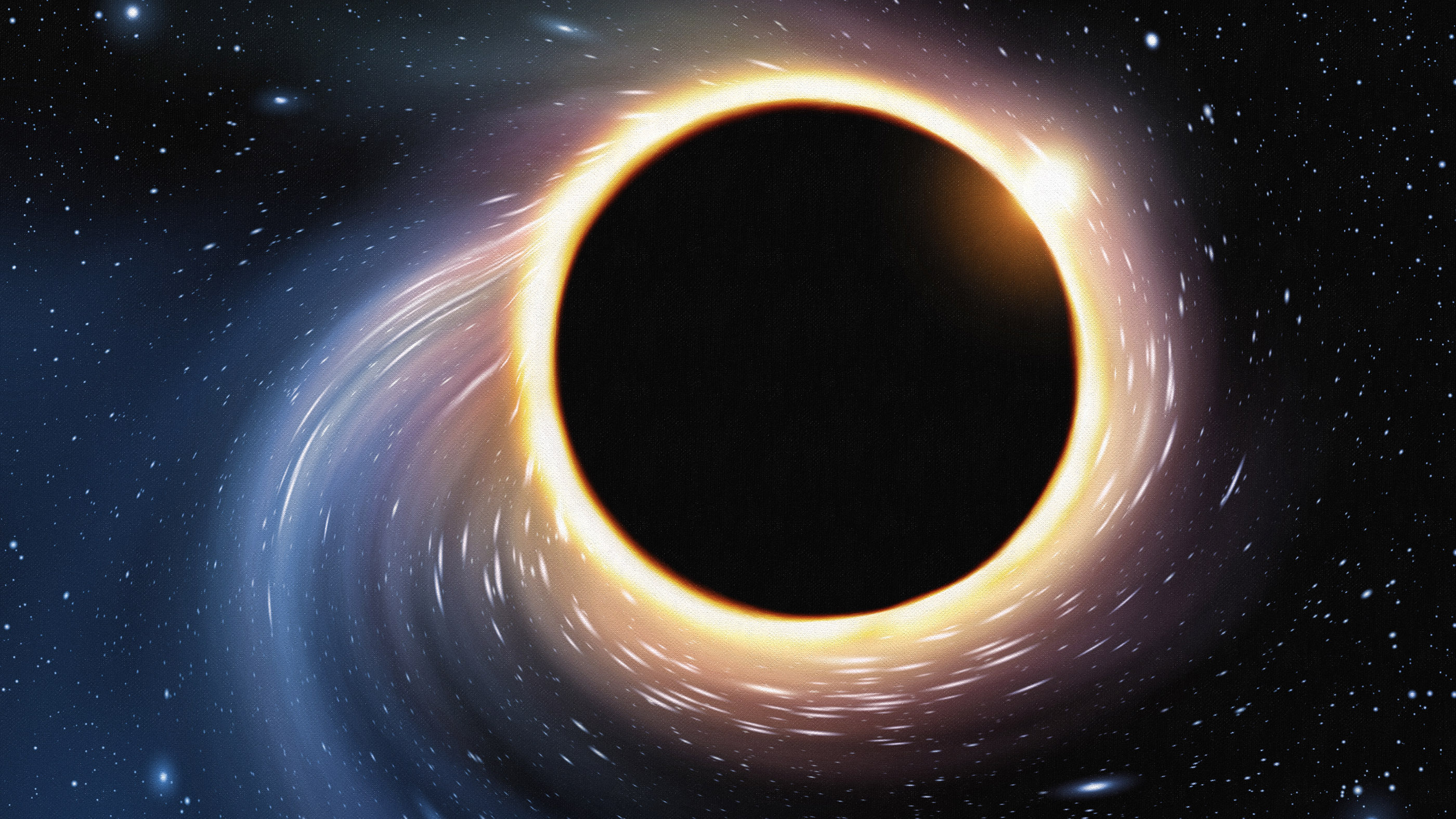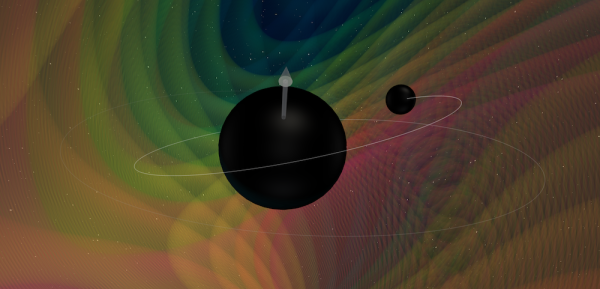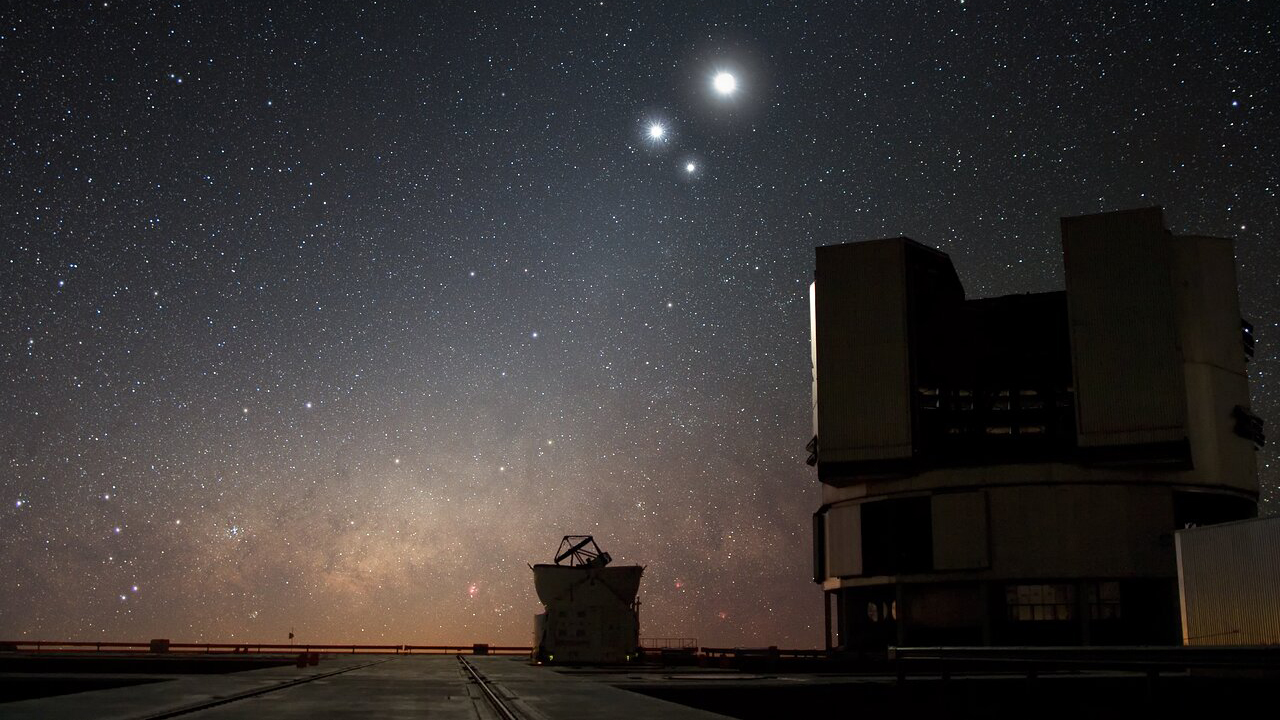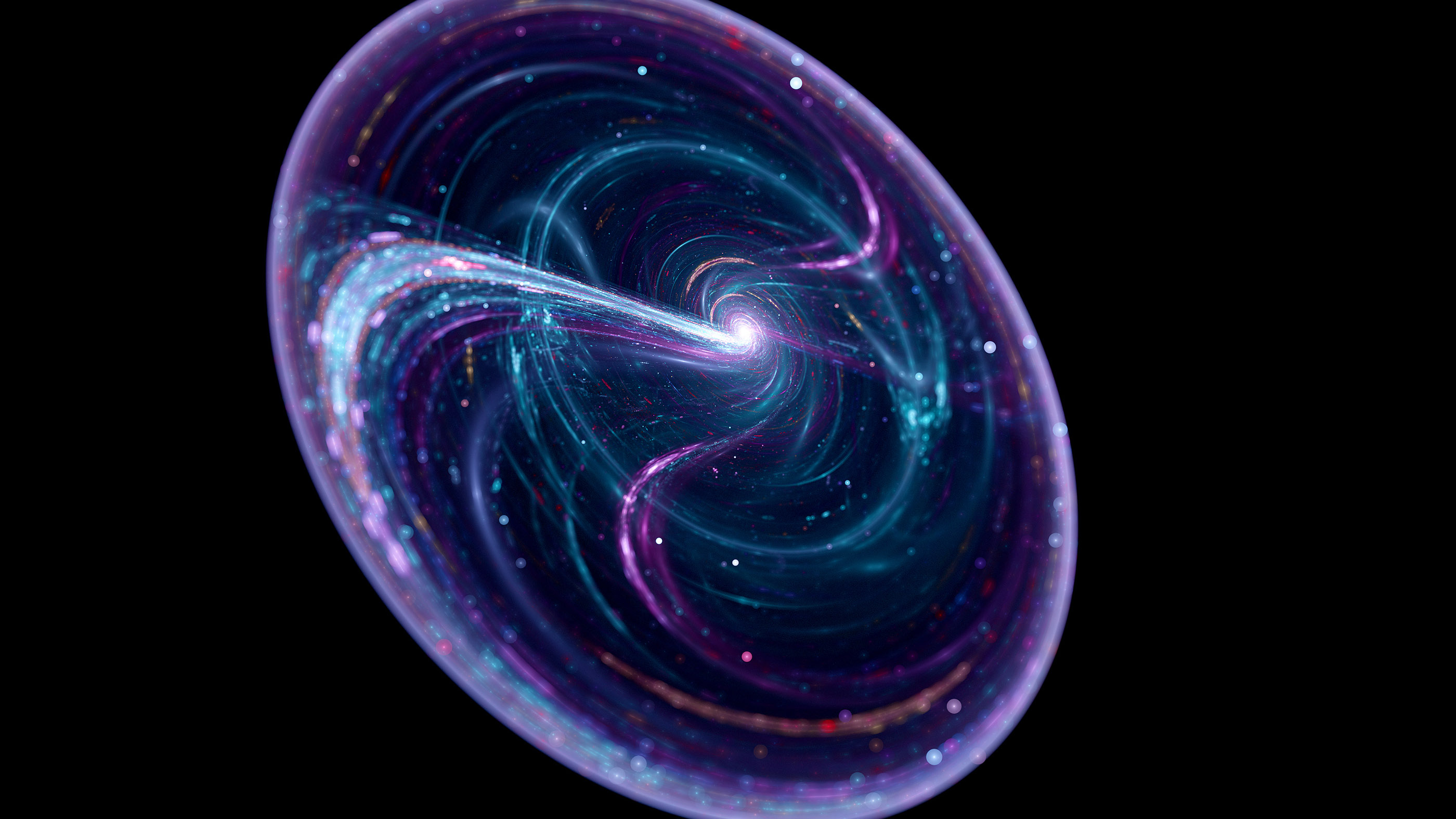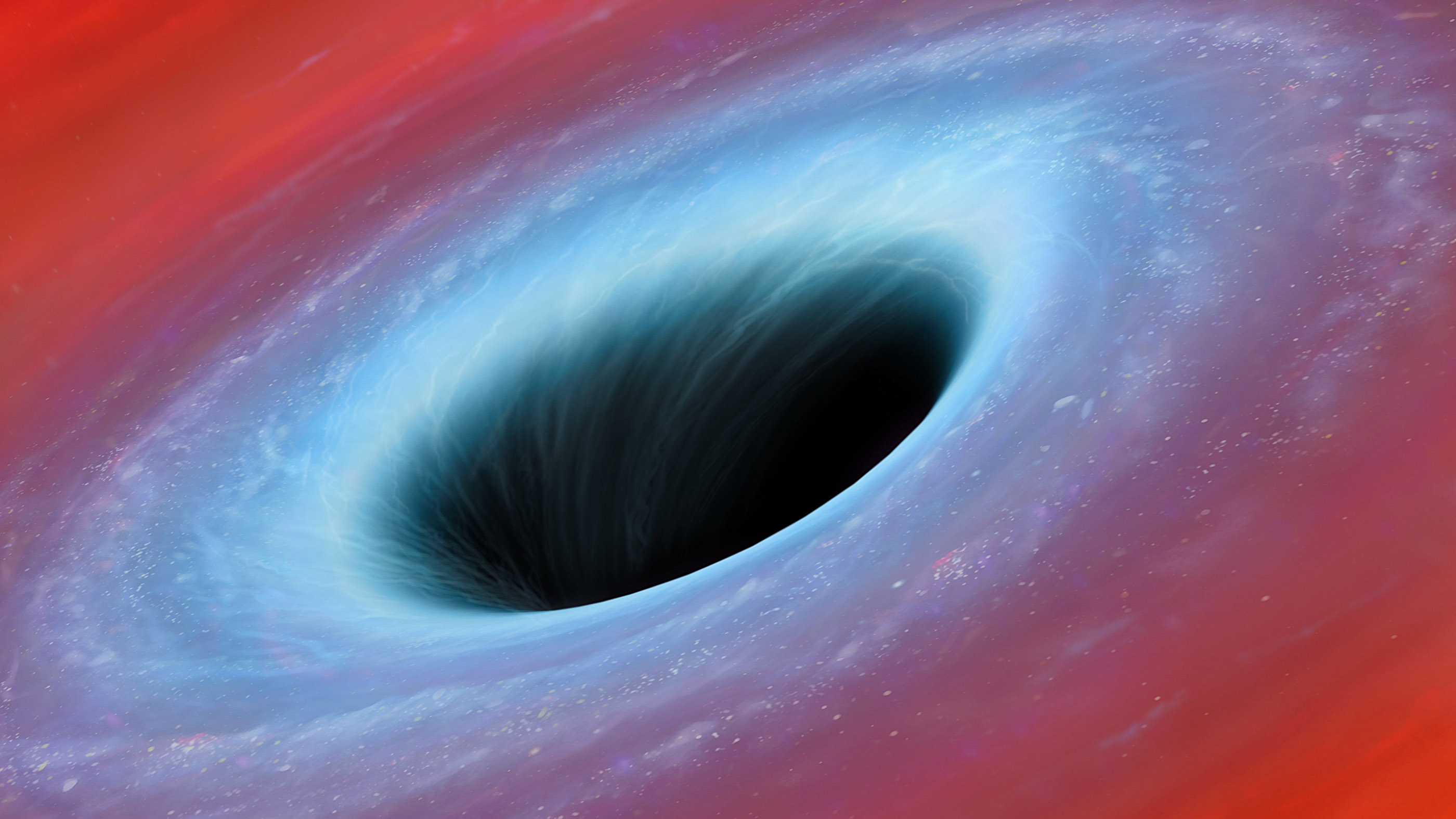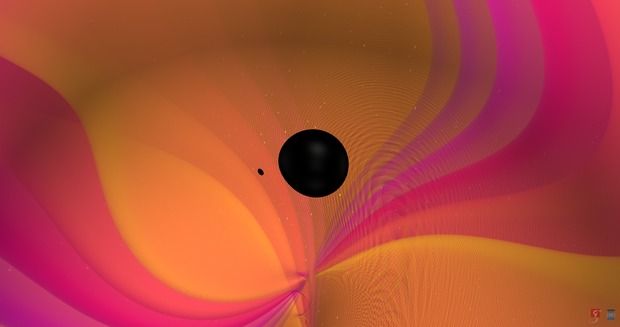10 huge black hole findings from 2020
Physicists are currently in a golden age of new knowledge about black holes. Since 2015, researchers have been able to get signals directly from merging black holes using the Laser Interferometer Gravitational-Wave Observatory (LIGO), while observatories like the Event Horizon Telescope (EHT) have produced the first image of a black hole’s shadow. This year was no exception, with a fresh crop of exciting and unique results expanding our black hole horizons. Here, we take a look at some of the most spectacular black hole findings of 2020.
Nobel Prize in physics goes to black holes
As if to certify that this year was a great one for black hole research, science’s top achievement, the Nobel Prize, was handed in October to three physicists whose work has elucidated the lives of these mysterious cosmic entities. Roger Penrose, of the University of Oxford in the U.K., received one-half of the prize "for the discovery that black hole formation is a robust prediction of the general theory of relativity," while Andrea Ghez of UCLA and Reinhard Genzel, of the University of Bonn and the Max Planck Institute for Extraterrestrial Physics in Germany, jointly shared the other half "for the discovery of a supermassive compact object at the center of our galaxy," according to the Royal Swedish Academy of Sciences. Ghez is only the fourth woman to be awarded a Nobel in physics ever, after Marie Curie in 1903, Maria Goeppert-Mayer in 1963 and Donna Strickland in 2018.
Read more: Nobel Prize in physics awarded to 3 scientists for black hole discoveries
LIGO sees its biggest black hole crash yet
LIGO and its European counterpart Virgo observe black holes through gravitational waves, ginormous ripples in the fabric of space-time emitted when massive objects oscillate. The facilities have already racked up a number of impressive discoveries. But in May, the collaboration announced that it had spotted its largest black hole collision ever, with one 85 times the mass of the sun and the other 66 times the sun’s mass smashing together to form a black hole 142 times the mass of the sun. In addition to setting records, the finding was the first in the so-called “forbidden” zone of middleweight black holes. Though astronomers had seen small black holes roughly the size of our sun and know that colossal ones with millions of times the mass of the sun exist in the centers of galaxies, no one had previously found evidence for black holes in this mid range. Exactly how they formed remains a mystery that scientists are now working to unravel.
Read more: The largest black hole collision ever detected
Primordial black holes made it big
Shortly after the Big Bang, the universe was permeated with hot and turbulent radiation. In some regions the energy was dense enough that it could have theoretically collapsed in on itself and formed a black hole. While physicists still don’t know if these entities, known as primordial black holes (PBHs), exist, they have lately been mulling over what would happen if they did. Several papers, including one published in November, have suggested that these black holes, some of which would be smaller than those formed from dying stars, could conceivably make up dark matter, an unknown substance that exerts an gravitational influence throughout the cosmos. Experiments are underway to search for PBHs in upcoming years and either prove or refute their existence.
Read more: Swarms of primordial black holes might fill our universe
Breaking space news, the latest updates on rocket launches, skywatching events and more!
Super-duper-size black holes could exist
What if you took the incredibly massive black holes sitting in the centers of galaxies and turned them up to 11? That’s what researchers in a paper in September proposed, discussing the possibility of "stupendously large black holes," or SLABs. These entities would weigh at least 1 trillion times the mass of the sun, 10 times more than the largest currently known black hole, a beast with 66 billion solar masses named TON 618. Some of the SLABs could have formed in the early universe, making them another class of primordial black hole, which means we might be able to see their imprint on the cosmic microwave background, a light leftover from when our universe was only 380,000 years old. Others could be spotted by looking for the way they distort the light of distant stars should a SLAB come between us. The concept remains hypothetical for now but is attracting increased attention.
Read more: Black holes so big we didn't know they could form could be hiding in the universe
LIGO detects a lopsided merger
The majority of the black hole duos detected by the LIGO and Virgo instruments have roughly the same mass as one another. But in April, the collaboration announced that they had observed its most asymmetric crash yet. The objects, which smashed together about 2.4 billion light-years away, had around eight and 30 times the mass of our sun, respectively. "This is roughly equal to the ratio of filling in a regular Oreo to [that] in a Mega Stuf Oreo," Christopher Berry, a gravitational-wave scientist at Northwestern University, wrote in a blog post at the time. Such an unexpected event was thought to be rare enough that the gravitational wave facilities wouldn’t see it after just a few years running. The finding challenges these assumptions and has led researchers to consider the possibility of hierarchical mergers, in which one black hole collides with another and then the resulting remnant goes on to merge with yet another black hole, as an explanation.
Read more: Scientists detect rare crash of two mismatched black holes
Telescopes watch a black hole 'spaghettify' a star
When a massive object comes within a certain distance from a black hole, the extreme gravitational forces present there can shred the object into long strands of material that get strewn all around. This process, known colloquially as spaghettification, has rarely been seen because most black holes are surrounded by an obscuring cloud of gas and dust, the burps of former meals as well as material that escaped being eaten. But in October, astronomers with the European Southern Observatory managed to catch the spaghettification of a star in unprecedented detail using both the Very Large Telescope and New Technology Telescope. The violent event, known blandly as AT 2019qiz, will give researchers insights into these occurrences and help them better understand gravity in extreme environments.
Read more: Black hole caught turning a poor star into spaghetti
Closest black hole ever spotted
Nobody wants to get too close to a black hole (see the entry on spaghettification). Luckily the cosmic Pac-Man seen in May orbiting with a pair of companion stars known as HR 6819 is at an astronomically safe distance from its partners. Lurking 1,000 light-years from Earth in the southern constellation of Telescopium, the newfound black hole is three times closer than the previous record holder. Astronomers can’t directly observe the black hole itself, but were able to infer its presence based on how it gravitationally influences the other two objects in the system, tugging on their orbits. Skywatchers in the Southern Hemisphere can see the stars in the HR 6819 system for themselves with the unaided eye by consulting a star chart and looking in the constellation Telescopium, near the border with the constellation of Pavo, the peacock.
Read more: Astronomers find closest black hole to Earth
Black holes could be fuzzballs
For a black hole to form, matter and energy must collapse down to a tiny point of infinite density. Since infinities like this should be physically impossible, theorists have long sought a way to get around such a bizarre outcome. According to string theory, which replaces all particles and forces with subatomic, vibrating strings, black holes might actually turn out to be something even weirder — a fuzzy yarn-like ball of fundamental strings. In October, a study showed that if the atoms in neutron stars, a type of stellar remnant not quite dense enough to form a black hole, were actually a bunch of strings, then compressing these strings together would actually form not a black hole but a fuzzball that would look like the aforementioned fundamental yarn ball. The strange idea has yet to be fully fleshed out but is one possible alternative to dealing with infinity.
Read more: Black holes may not exist, but fuzzballs might
Dangerous ‘naked’ black holes could lurk in the universe
According to physicists, every black hole should be surrounded by what’s known as an event horizon — a boundary where once you fall in, you never come out. Yet ever since black holes were first postulated, researchers have wondered if the event horizon is strictly necessary. Could it be possible to have a black hole without one, a so-called ‘naked’ black hole? This might be dangerous since the known laws of physics break down inside a black hole’s event horizon, and a naked black hole wouldn’t offer that barrier's protection. Though most theorists think nudity is forbidden for black holes, a paper in November suggested that there might be a way to check for sure. The trick is to look for differences in the accretion disks, or rings of gas and dust formed when a black hole feeds, that could indicate a visible difference between naked and normal black holes.
Read more: Do dangerous 'naked' black holes lurk in the universe?
A treasure trove of black holes
Christmas came early this year for black hole scientists. In October, the collaboration overseeing LIGO and its European counterpart Virgo released a bountiful new catalog of dozens of gravitational-wave signals detected between April and September 2019. The 39 events included many intriguing findings, such as the massive black hole merger that resulted in a remnant with 142 solar masses, the extremely lopsided event with masses eight and thirty times the sun and a mysterious object that seemed to either be a small black hole or a large neutron star. Researchers were thrilled with the data, which showed that the facilities were picking up on average one new signal every five days, and plan to use it to better understand the behavior and frequency of black hole mergers.
Read more: Scientists just found the largest neutron star (or smallest black hole)
Originally published on Live Science.

Adam Mann is a journalist specializing in astronomy and physics stories. His work has appeared in the New York Times, New Yorker, Wall Street Journal, Wired, Nature, Science, and many other places. He lives in Oakland, California, where he enjoys riding his bike. Follow him on Twitter @adamspacemann or visit his website at https://www.adamspacemann.com/.

